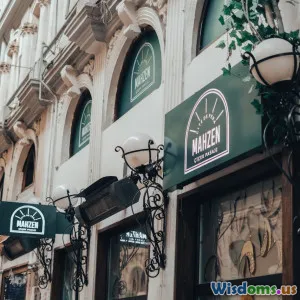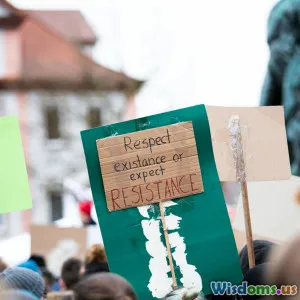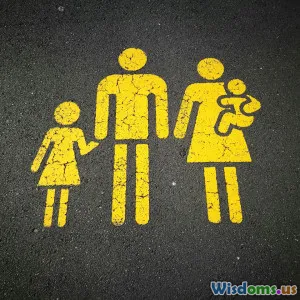
Global Citizen: Navigating Cultural Identity in the Digital Age
8 min read Explore how digital connectivity shapes cultural identity and what it means to be a global citizen today. (0 Reviews)
Global Citizen: Navigating Cultural Identity in the Digital Age
Introduction
Imagine a world where your cultural identity is as boundless as your online footprint—a world where your traditions, languages, and heritage are not confined by geography but amplified through digital channels. In today’s interconnected era, the concept of being a "global citizen" extends beyond passport stamps to the ways we shape and express our identities in cyberspace. As social media platforms, digital communities, and virtual experiences ebb and flow, they have transformed cultural identity into a flexible, dynamic journey.
This article dives deep into understanding the nuances of cultural identity in the digital age, exploring what it means to be a truly global citizen today. We navigate how online interactions, digital storytelling, and technology challenge, reshape, and enrich traditions, influencing everything from language preservation to social norms.
Digital Interconnectedness and Cultural Identity
The 21st century has ushered an unprecedented digital interconnectedness. Over 5 billion people worldwide use the internet, and billions more engage daily with social media platforms. This hyperconnectivity allows cultural exchanges to occur faster and more frequently than ever before.
The Blending and Reinforcement of Identities
While globalization often stirs fears of cultural homogenization, digital technologies paradoxically facilitate both the blending and the preservation of unique cultural traits. For instance, the rise of TikTok has empowered creators worldwide to showcase traditional dances, recipes, languages, and rituals — reaching audiences they could never have imagined.
Take the example of indigenous communities such as the Maori of New Zealand or the Sámi people of Scandinavia. They leverage digital platforms to reaffirm their cultural heritage, teach languages, and spread awareness of social and environmental issues. This counters the potential marginalization they might face offline and fuels a pride centered around identity.
Challenges in Navigating Authenticity Online
However, not all digital cultural representations are free of complication. The question of authenticity arises when cultural symbols and practices become viral trends, sometimes stripped of context and meaning. For example, the commercialization of Native American headdresses at fashion events or social media can lead to cultural appropriation controversies.
Hence, a key challenge becomes navigating cultural respect while embracing the openness that digital platforms offer.
The Role of Social Media in Shaping Belonging
Social media platforms are not merely communication tools; they are spaces where identities are curated, negotiated, and performed.
Building Communities Across Borders
For diasporic populations, social media recreates a sense of community despite physical distance. Platforms like Facebook groups, WhatsApp chats, or Discord servers enable immigrant families to stay connected to their homeland and to each other, sharing traditions, festivals, and news in real-time.
Consider the Indian diaspora, which uses platforms like Instagram and YouTube to celebrate festivals like Diwali or Holi globally, weaving a digital tapestry that blends homeland cultural practices with local influences from countries of residence.
The Fluidity of Self-Representation
Digital personas allow for experimentation with identity facets that may be restricted or nuanced offline. Non-binary individuals, for example, find spaces on Twitter or TikTok where gender identity is fluid and accepted, influencing broader cultural narratives around identity.
This fluidity also manifests in language. Younger generations might blend languages or use memes unique to their hybrid cultural experiences, creating new cultural dialects unique to the digital age.
Digital Literacy and Cultural Navigation
Effectively navigating cultural identity in the digital world requires a strong sense of digital literacy and critical thinking.
The Importance of Media Literacy
Users must critically evaluate content to distinguish respectful cultural exchange from appropriation or misinformation. Platforms hosting influencer content or viral trends sometimes propagate stereotypes or historical inaccuracies, potentially shaping perceptions harmful to certain cultures.
Educational initiatives, such as UNESCO’s promotion of digital literacy, emphasize teaching users how to engage respectfully and thoughtfully with cultural content.
Encouraging Inclusive Digital Spaces
Tech companies and digital policymakers are increasingly aware of the impact their platforms have on cultural representation. Efforts include enabling multilingual interfaces, promoting diverse content creators, and instituting stricter policies against hate speech and cultural insensitivity.
Example: Twitter’s implementation of features allowing users to “report” cultural appropriation or offensive content is a step toward safeguarding cultural identities online.
Real-World Insights: Voices of Global Citizens
To better understand these dynamics, consider insights from individuals living as global citizens:
-
Leila, an Egyptian-American artist, uses Instagram to tell stories of her bicultural heritage through digital murals—merging Pharaonic symbols with contemporary art styles, evoking pride and dialogue across her followers.
-
Arjun, a tech worker in Silicon Valley originally from India, shares how participating in online cultural festivals with his family during the pandemic maintained a sense of connection.
-
Sofia, a Venezuelan linguist, conducts online workshops on endangered native languages, fostering global awareness and taking digital preservation beyond borders.
These stories underscore how digital spaces empower individuals to live and express multifaceted identities dynamically.
Conclusion: Becoming a Mindful Global Citizen in the Digital Age
The digital age has transformed the very essence of cultural identity, blending tradition with technology in unique and complex ways. Being a global citizen today means embracing this complexity: understanding that cultural identity is no longer tethered solely to place or lineage but also shaped by digital interactions, narratives, and responsibilities.
To navigate this terrain thoughtfully, we must leverage digital tools to preserve heritage while advocating for respect and inclusivity. We should engage critically with the digital content we consume and create, fostering online communities that celebrate diversity and challenge cultural misunderstandings.
Ultimately, the digital age presents an unprecedented opportunity—to redefine cultural identity not as a boundary, but as a bridge connecting humanity across borders, perspectives, and time.
References
- Pew Research Center: Internet/Broadband Fact Sheet (2023)
- UNESCO: Global Media and Information Literacy Assessment Framework
- examples from TikTok Creators and Indigenous Digital Movements
- Social Media and Diasporas: contemporary challenges & digital storytelling
Embrace the digital world not to erase cultural roots, but to enrich and share them widely—because your identity, just like your connections, is global.
Rate the Post
User Reviews
Popular Posts





















